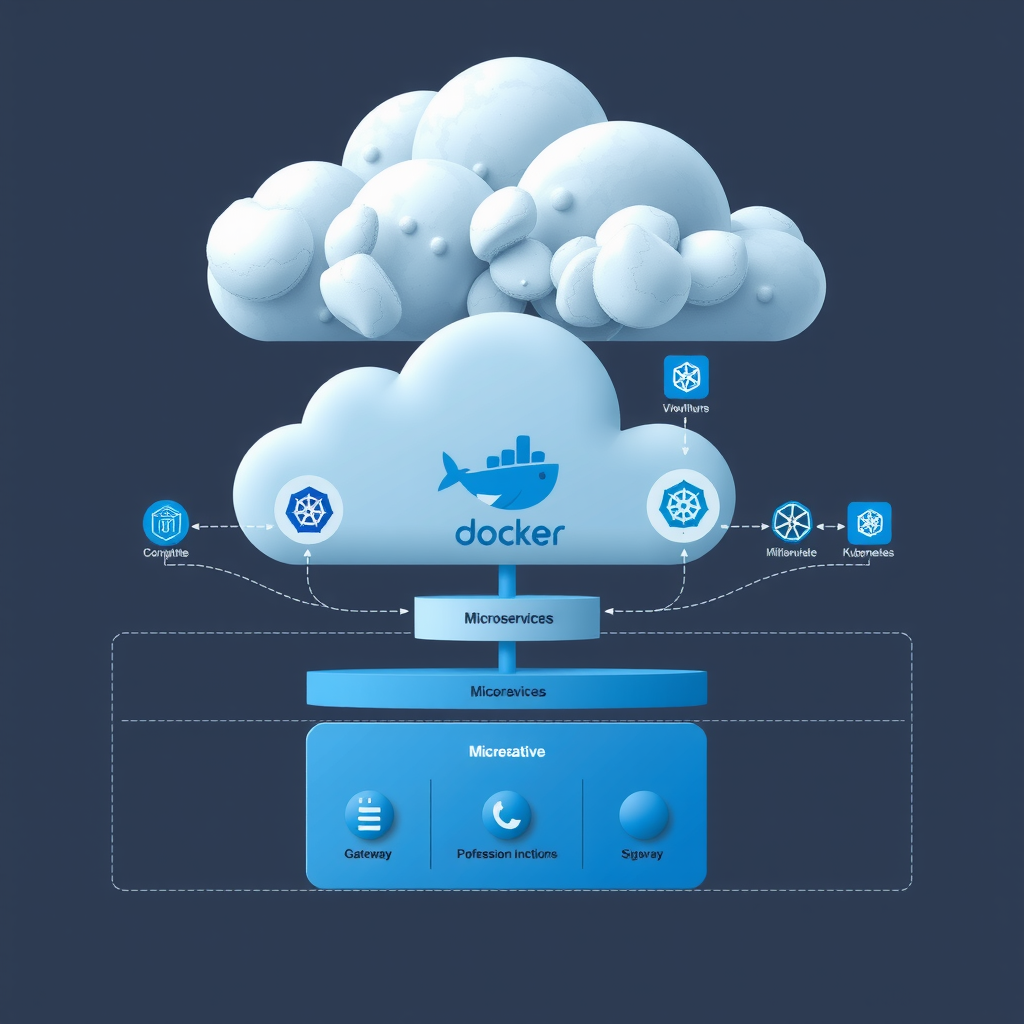The Future of Digital Transformation in Enterprise Software

In today's rapidly evolving technological landscape, enterprises face unprecedented challenges and opportunities. Digital transformation has moved from being a competitive advantage to an absolute necessity for survival and growth in the modern business ecosystem.
The convergence of cloud computing, artificial intelligence, machine learning, and advanced automation technologies is fundamentally reshaping how organizations operate, compete, and deliver value to their customers. Companies that successfully navigate this transformation are positioning themselves for long-term success, while those that resist change risk obsolescence in an increasingly digital-first world.
Understanding the Digital Transformation Imperative
Digital transformation represents more than just implementing new technologies—it's a fundamental reimagining of business processes, organizational culture, and customer engagement strategies. Modern enterprises must embrace a holistic approach that integrates cutting-edge software solutions with strategic business objectives to achieve meaningful operational excellence.
The Phantom Project initiative has been at the forefront of this revolution, helping organizations understand that successful digital transformation requires a careful balance of innovation, precision, and performance. It's not merely about adopting the latest technologies, but about strategically leveraging them to create sustainable competitive advantages.

Cloud-Native Architectures: The Foundation of Modern Enterprise
Cloud-native architectures have emerged as the cornerstone of digital transformation strategies. By leveraging containerization, microservices, and serverless computing, organizations can achieve unprecedented levels of scalability, resilience, and agility. These architectural patterns enable enterprises to respond rapidly to market changes, deploy updates seamlessly, and optimize resource utilization.
The shift from monolithic applications to distributed, cloud-native systems represents a paradigm shift in software development and deployment. Organizations adopting these approaches report significant improvements in deployment frequency, mean time to recovery, and overall system reliability. The ability to scale individual components independently allows for more efficient resource allocation and cost optimization.
"The transition to cloud-native architectures isn't just a technical upgrade—it's a strategic transformation that enables organizations to innovate faster, reduce operational costs, and deliver superior customer experiences in an increasingly competitive marketplace."
Key Benefits of Cloud-Native Adoption
- Enhanced Scalability:Automatically scale resources based on demand, ensuring optimal performance during peak periods while minimizing costs during low-traffic times.
- Improved Resilience:Distributed architectures eliminate single points of failure, ensuring business continuity even when individual components experience issues.
- Accelerated Innovation:Microservices enable independent development and deployment cycles, allowing teams to innovate and iterate rapidly without affecting the entire system.
- Cost Optimization:Pay-per-use models and efficient resource utilization significantly reduce infrastructure costs compared to traditional on-premises solutions.
- Global Reach:Deploy applications across multiple geographic regions, ensuring low latency and high availability for users worldwide.

AI-Powered Automation: Transforming Operations
Artificial intelligence and machine learning are revolutionizing enterprise operations by automating complex processes, enhancing decision-making capabilities, and uncovering insights that were previously impossible to detect. From predictive maintenance to intelligent customer service, AI-powered automation is delivering tangible business value across all organizational functions.
Modern enterprises are leveraging AI to streamline workflows, reduce operational costs, and improve accuracy in critical business processes. Natural language processing enables sophisticated chatbots and virtual assistants that handle customer inquiries with human-like understanding. Computer vision technologies automate quality control and inspection processes in manufacturing environments. Predictive analytics help organizations anticipate market trends and customer behaviors with unprecedented accuracy.
Practical Applications of AI in Enterprise Software
The integration of AI into enterprise software solutions is creating new possibilities for operational efficiency and competitive advantage. Organizations implementing AI-driven automation report significant improvements in productivity, accuracy, and employee satisfaction as routine tasks are automated, allowing human workers to focus on higher-value activities.
- Intelligent Process Automation:AI algorithms identify patterns in business processes and automatically optimize workflows, reducing manual intervention and minimizing errors.
- Predictive Maintenance:Machine learning models analyze equipment data to predict failures before they occur, reducing downtime and maintenance costs.
- Advanced Analytics:AI-powered analytics platforms process vast amounts of data to uncover actionable insights, enabling data-driven decision-making at all organizational levels.
- Personalized Customer Experiences:Machine learning algorithms analyze customer behavior to deliver personalized recommendations, content, and services that increase engagement and satisfaction.
- Fraud Detection and Security:AI systems continuously monitor transactions and user behavior to identify anomalies and potential security threats in real-time.

DevOps and Continuous Innovation
The adoption of DevOps practices has become essential for organizations seeking to accelerate software delivery while maintaining high quality standards. By breaking down silos between development and operations teams, DevOps enables continuous integration, continuous delivery, and rapid iteration cycles that keep pace with market demands.
Modern DevOps practices incorporate automated testing, infrastructure as code, and comprehensive monitoring to ensure that software releases are reliable, secure, and performant. This approach reduces the time from concept to production, enabling organizations to respond quickly to customer feedback and market opportunities. The Phantom Project methodology emphasizes the importance of building robust DevOps pipelines that support innovation while maintaining operational stability.
Building a Culture of Continuous Improvement
Successful digital transformation requires more than just implementing new technologies—it demands a fundamental shift in organizational culture. Companies must foster an environment that embraces experimentation, learns from failures, and continuously seeks improvement. This cultural transformation is often the most challenging aspect of digital transformation, but it's also the most critical for long-term success.
"Digital transformation is not a destination but a continuous journey. Organizations that embrace this mindset and build cultures of innovation, collaboration, and continuous learning will thrive in the digital era."
Data-Driven Decision Making
In the digital age, data has become one of the most valuable assets for enterprises. Organizations that effectively collect, analyze, and act on data insights gain significant competitive advantages. Modern enterprise software solutions provide sophisticated analytics capabilities that transform raw data into actionable intelligence, enabling leaders to make informed decisions based on real-time information rather than intuition alone.
The proliferation of IoT devices, mobile applications, and digital touchpoints generates unprecedented volumes of data. Advanced analytics platforms leverage big data technologies and machine learning algorithms to process this information at scale, uncovering patterns and trends that inform strategic planning, operational optimization, and customer engagement strategies.

Security and Compliance in the Digital Era
As enterprises embrace digital transformation, security and compliance become increasingly critical concerns. The expanded attack surface created by cloud adoption, mobile devices, and interconnected systems requires comprehensive security strategies that protect sensitive data while enabling business agility. Modern security approaches emphasize zero-trust architectures, continuous monitoring, and automated threat response.
Regulatory compliance adds another layer of complexity to digital transformation initiatives. Organizations must navigate evolving data protection regulations, industry-specific compliance requirements, and international standards while maintaining operational efficiency. Enterprise software solutions that incorporate security and compliance by design help organizations meet these obligations without sacrificing innovation or agility.
Essential Security Practices for Modern Enterprises
- Zero-Trust Architecture:Implement security models that verify every access request regardless of source, eliminating implicit trust and reducing breach risks.
- Encryption Everywhere:Protect data at rest and in transit using strong encryption protocols, ensuring confidentiality even if systems are compromised.
- Continuous Monitoring:Deploy advanced monitoring solutions that detect anomalies and potential threats in real-time, enabling rapid response to security incidents.
- Identity and Access Management:Implement robust authentication and authorization systems, including multi-factor authentication and role-based access controls.
- Regular Security Audits:Conduct comprehensive security assessments and penetration testing to identify vulnerabilities before they can be exploited.
The Road Ahead: Emerging Technologies and Trends
The pace of technological innovation shows no signs of slowing. Emerging technologies such as edge computing, quantum computing, and advanced AI models promise to further transform enterprise software landscapes. Organizations that stay informed about these developments and strategically invest in promising technologies will be best positioned to maintain competitive advantages in the years ahead.
Edge computing is bringing processing power closer to data sources, reducing latency and enabling real-time decision-making in IoT applications. Quantum computing, while still in early stages, has the potential to revolutionize cryptography, optimization problems, and complex simulations. Advanced AI models continue to push the boundaries of what's possible in natural language understanding, computer vision, and autonomous systems.
Conclusion: Embracing the Digital Future
Digital transformation represents both a challenge and an opportunity for modern enterprises. Organizations that successfully navigate this transformation by adopting cloud-native architectures, leveraging AI-powered automation, implementing robust DevOps practices, and maintaining strong security postures will thrive in the digital economy. The key to success lies not just in adopting new technologies, but in fundamentally reimagining business processes, organizational structures, and customer engagement strategies.
The Phantom Project initiative demonstrates that successful digital transformation requires a holistic approach that balances innovation with precision and performance. By focusing on strategic objectives, investing in the right technologies, and fostering cultures of continuous improvement, enterprises can achieve operational excellence and sustainable competitive advantages in an increasingly digital world.
As we look to the future, one thing is clear: digital transformation is not a one-time project but an ongoing journey. Organizations must remain agile, continuously adapt to new technologies and market conditions, and never stop innovating. Those that embrace this mindset will not just survive the digital revolution—they will lead it, shaping the future of their industries and creating lasting value for customers, employees, and stakeholders alike.